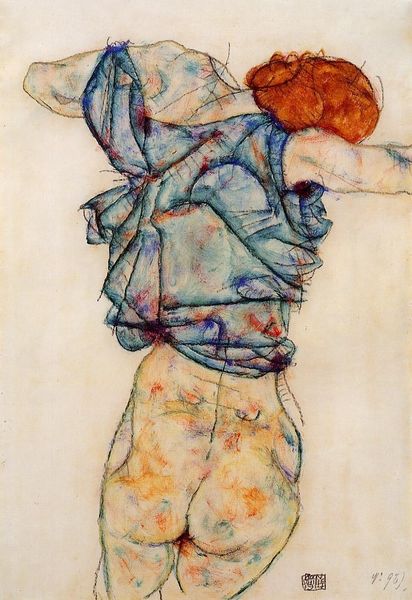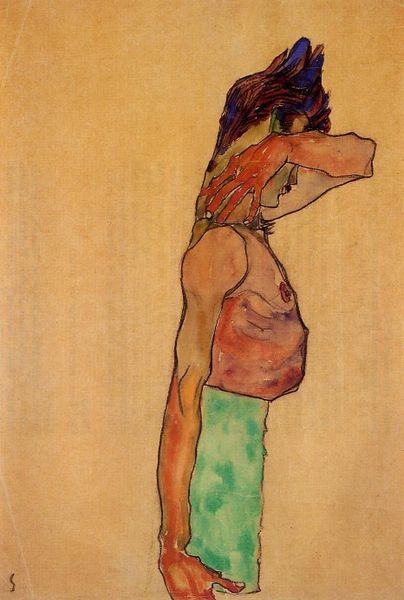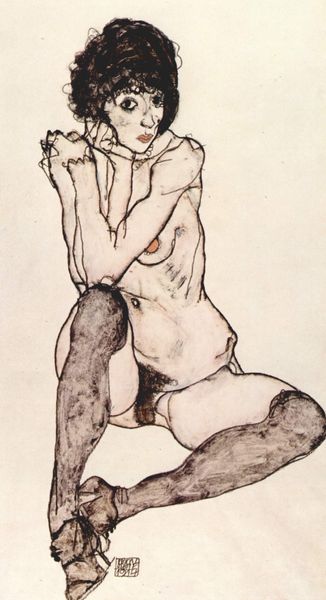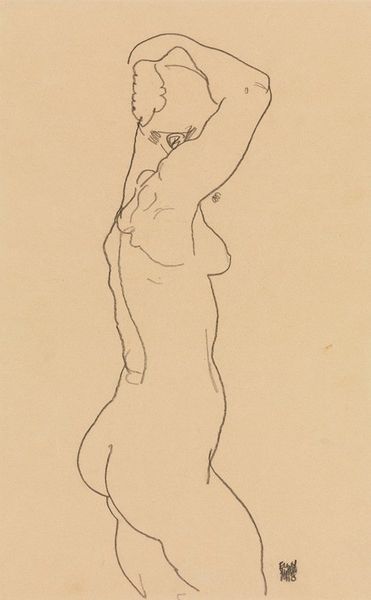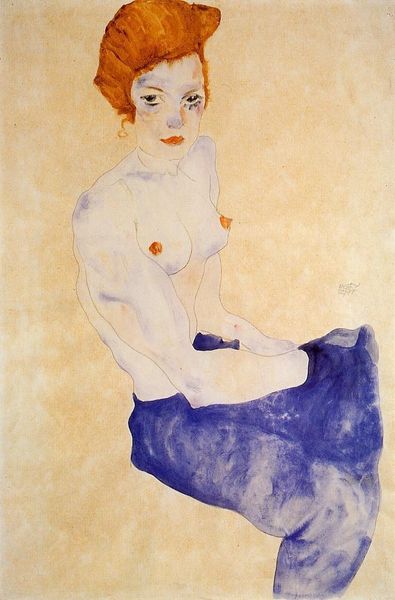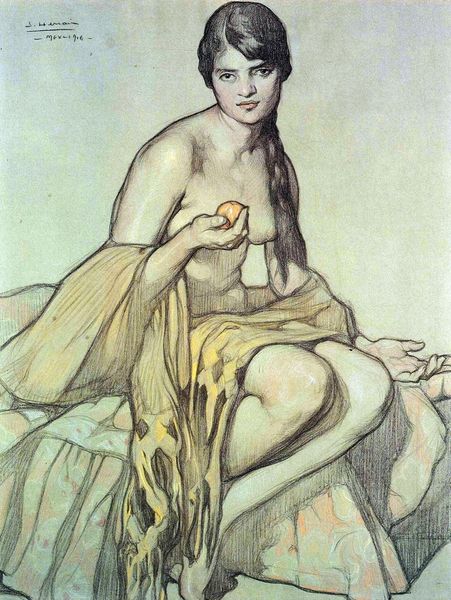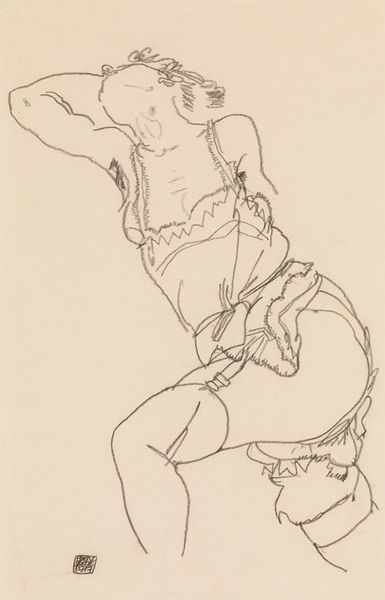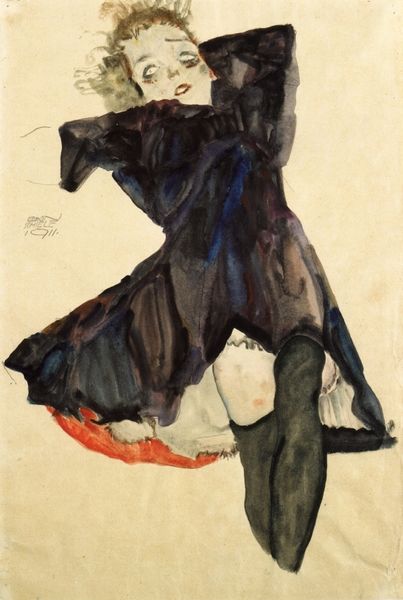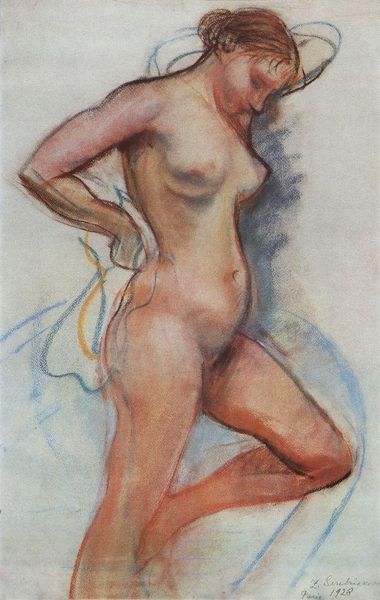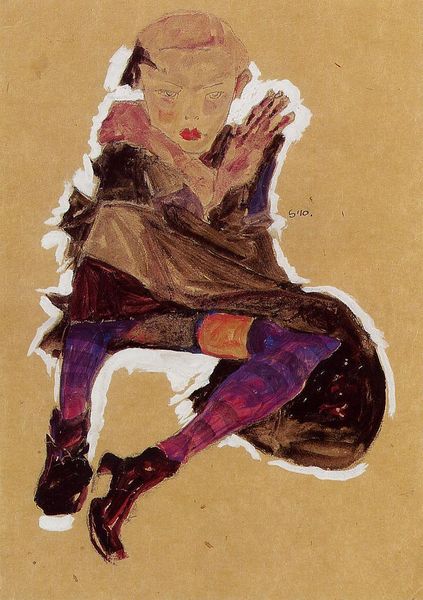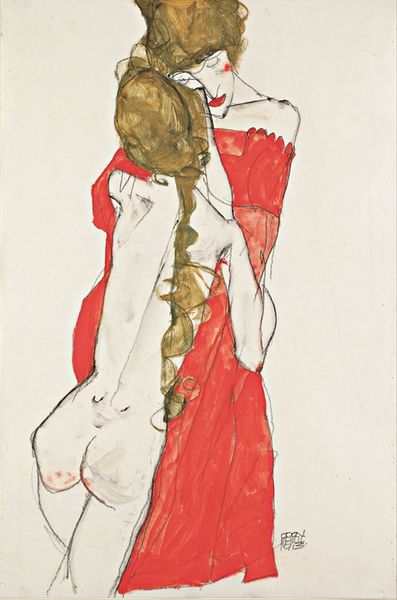
drawing, pencil
#
portrait
#
drawing
#
figuration
#
pencil
#
expressionism
#
modernism
Copyright: Public domain
Curator: "The Green Stocking," a pencil drawing created by Egon Schiele in 1914. It is currently held in a private collection. The woman's eyes are intense. Editor: Yes, she seems both vulnerable and defiant. The harsh lines emphasize a raw emotional state. What strikes me most is the way her orange dress kind of blooms around her. It almost engulfs her, doesn’t it? Curator: I think that engulfment is key. Schiele, often associated with Viennese Expressionism, used his art as a vehicle for portraying not just physical likeness, but inner psychological states and, particularly, those wrestling with social repression. This work was created during the first World War; considering Vienna’s tense social landscape at that time might inform a more holistic view. Editor: Indeed, and color symbolism really resonates here. The jarring contrast of the solitary green stocking pulls our focus to it. Green traditionally represents growth, but here, paired with the unsettling pose and context, it feels more like a symbol of something unnatural, perhaps stifled development. Curator: Interesting, considering the historical interpretation around female sexuality during the early 20th century. Green's association with envy might also signal societal judgment directed toward female desire. Schiele's art always challenged Viennese social decorum. It really shows in how women were perceived as both objects of desire and sources of moral corruption in this historical environment. Editor: Precisely. And her eyes, the pursed lips - the crimson there almost screams a forbidden act about to be discovered. Curator: Her averted gaze could also represent the institutional and societal constraints placed on women. The green stocking is then this small token of subversion, an intimate act of rebellion against the restrictive expectations placed upon her. Editor: Thinking about these tensions truly enriches the work. Looking at the work again, the symbolism feels a little more direct. Thank you for guiding me through this journey! Curator: And thank you, these visual clues encourage viewers to really question the narratives projected onto the figure and explore these contradictions further.
Comments
No comments
Be the first to comment and join the conversation on the ultimate creative platform.
